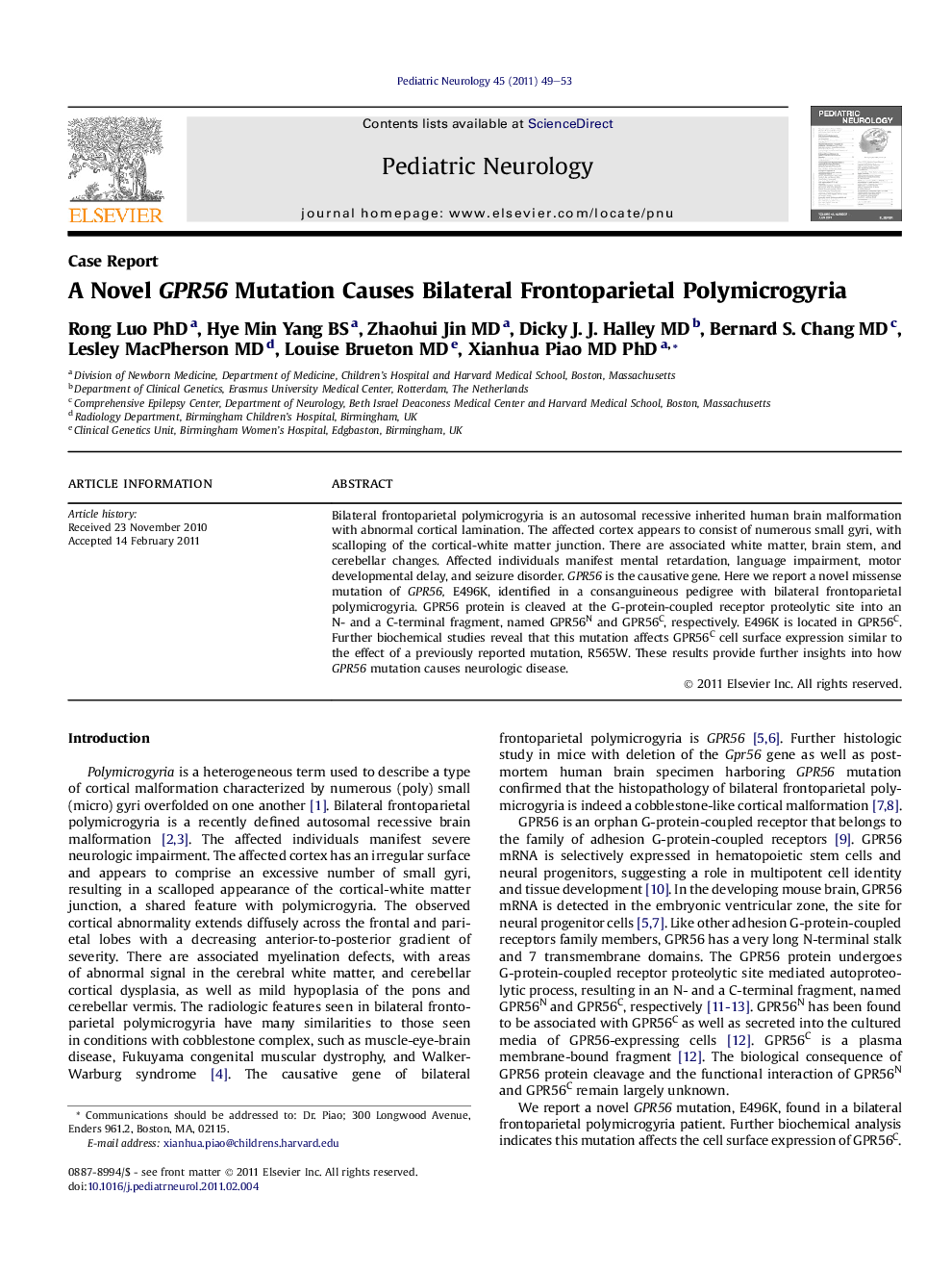| Article ID | Journal | Published Year | Pages | File Type |
|---|---|---|---|---|
| 3085534 | Pediatric Neurology | 2011 | 5 Pages |
Bilateral frontoparietal polymicrogyria is an autosomal recessive inherited human brain malformation with abnormal cortical lamination. The affected cortex appears to consist of numerous small gyri, with scalloping of the cortical-white matter junction. There are associated white matter, brain stem, and cerebellar changes. Affected individuals manifest mental retardation, language impairment, motor developmental delay, and seizure disorder. GPR56 is the causative gene. Here we report a novel missense mutation of GPR56, E496K, identified in a consanguineous pedigree with bilateral frontoparietal polymicrogyria. GPR56 protein is cleaved at the G-protein-coupled receptor proteolytic site into an N- and a C-terminal fragment, named GPR56N and GPR56C, respectively. E496K is located in GPR56C. Further biochemical studies reveal that this mutation affects GPR56C cell surface expression similar to the effect of a previously reported mutation, R565W. These results provide further insights into how GPR56 mutation causes neurologic disease.
